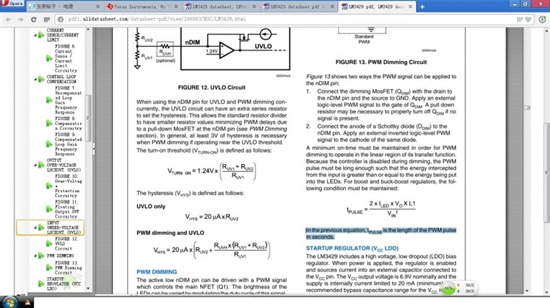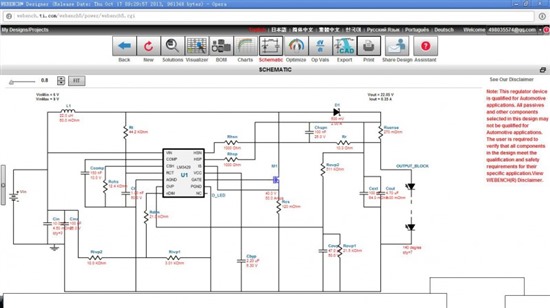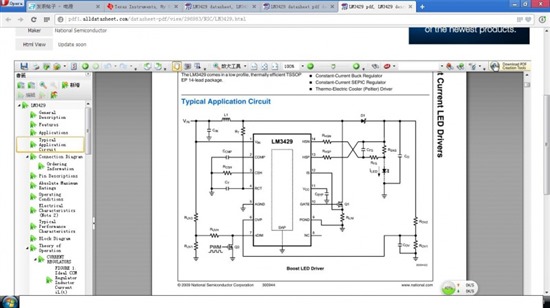TI's recently tested a LED driver, model LM3429.
Test conditions:
Input voltage: 6 ~ 9V (the actual use of battery-powered)
Output voltage: 24V
Output Current: 0.35A
External PWM frequency: 25K
Using TI's WEBENCH design the circuit as follows:
LM3429 dimming circuit as follows:
Problem:
In the actual test application without external PWM signal is, LM3429 is constant even if the input voltage changes in 6 ~ 9V, LED lamp brightness will not change with the voltage increases.
However, if coupled with a PWM signal, as long as the input voltage changes, LED lamp brightness will follow the input voltage changes, voltage rise will be more light, the darker the voltage drop will not be constant.
About PWM dimming, LM3429 has this to say:
A minimum on-time must be maintained in order for PWM
dimming to operate in the linear region of its transfer function.
Because the controller is disabled during dimming, the PWM
pulse must be long enough such that the energy intercepted
from the input is greater than or equal to the energy being put
into the LEDs. For boost and buck-boost regulators, the fol-
lowing condition must be maintained:
Does that mean that as I understand it, if I want a different input voltages remain the same brightness, PWM frequency to catch synchronous change?
The formula proposed involving input and output voltage, if the application is more complex.
What if I want to PWM dimming signal, but input voltage changing circumstances, my brightness remains unchanged What is the method?



